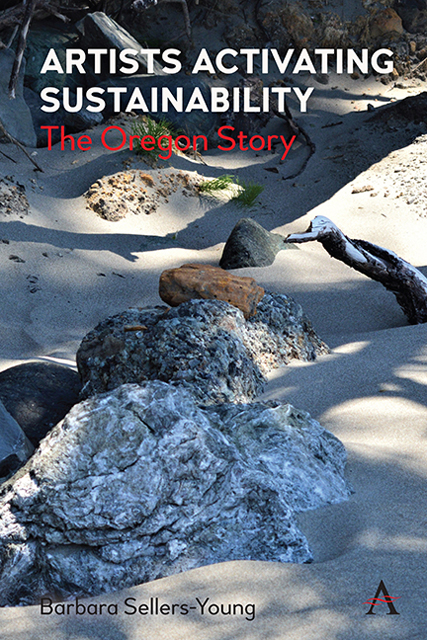Book contents
- Frontmatter
- Dedication
- Contents
- Acknowledgments
- List of Figures
- Introduction: Art, Environment and Metaphor
- 1 Environmental Activism, Arts and the Land of Eden Landscape One: High Desert Basin and Range
- Landscape One High Desert Basin and Range
- Landscape Two Columbia Gorge and Plateau
- Landscape Three Cascade Range
- Landscape Four The Willamette Valley
- Landscape Five Rogue River Valley
- Landscape Six Oregon Coast and Coast Range
- Index
Landscape Three - Cascade Range
Published online by Cambridge University Press: 10 January 2023
- Frontmatter
- Dedication
- Contents
- Acknowledgments
- List of Figures
- Introduction: Art, Environment and Metaphor
- 1 Environmental Activism, Arts and the Land of Eden Landscape One: High Desert Basin and Range
- Landscape One High Desert Basin and Range
- Landscape Two Columbia Gorge and Plateau
- Landscape Three Cascade Range
- Landscape Four The Willamette Valley
- Landscape Five Rogue River Valley
- Landscape Six Oregon Coast and Coast Range
- Index
Summary
Landscape
The Cascade Range is 260 miles long, 90 miles wide and covers roughly 17,000 square miles about 17 percent of the state of Oregon. The crest of the Cascade Range was built by the continuing eruptions of hundreds of volcanoes ranging in age from a few million years old to just a few hundred. Most of the eruptions created small cinder cones and produced lava flows that covered a few hundred acres to a few square miles. A few larger volcanoes including Mount Hood, the Three Sisters and Mount McLoughlin alternated between lava flows and explosive eruptions of ash, pumice and broken lava. Just 7,700 years ago, Mount Mazama, an active, 12,000-foot-tall high Cascade volcano, exploded in a massive eruption that blew 50 cubic miles of rock and ash into the air. The eruption blanketed the surrounding landscape with red-hot flows of ash and pumice and produced a cloud of ash that rained down over an area covering eight western states and three Canadian provinces. The amount of material erupted covered the entire state to a depth of almost three feet. What was left of the volcano collapsed on itself, leaving a gaping hole that eventually filled with snow melts to form Crater Lake. Lava cliffs rise to heights of up to 2,000 feet around the intensely blue and extremely deep lake.
Most of the largest peaks in the Cascade Range are still considered active volcanoes. This includes the snow caped Mt. Hood at 11,250 feet and similar mountains of the Cascade Range such as Mt. Jefferson (10,495) (Figure 9) and Three Sisters (South 10,358, Middle 10,046, North 10,085). Each of these volcanic mountains has the potential to erupt again. As the storms in general flow from west to east, the western slope of the Cascade Range receives 130 inches a year of precipitation and the Western side less than 20 inches. For this reason, the Western Cascade Range is lush in its forest floor with ferns, Douglas Fir, Western Cedar and other vegetation and the eastern side is sparse with Ponderosa Pine. The Cascade Range is home to at least 75 species of mammals including wolves, cougars and black bears. There are 200 species of birds including bald eagles.
- Type
- Chapter
- Information
- Artists Activating SustainabilityThe Oregon Story, pp. 89 - 92Publisher: Anthem PressPrint publication year: 2022

